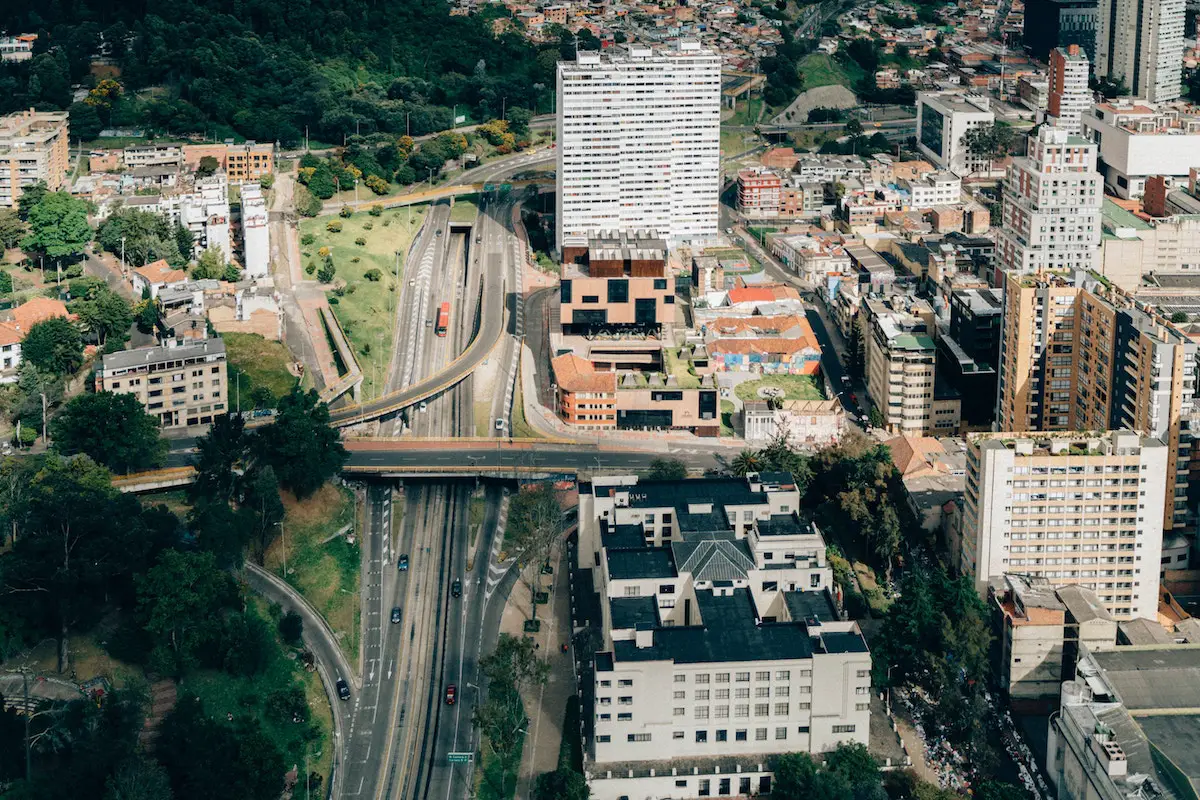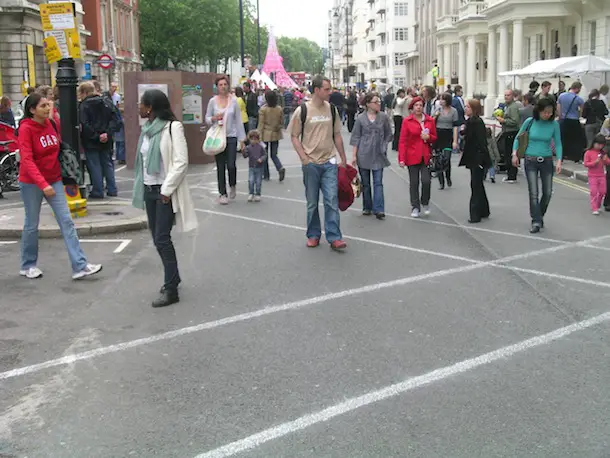We moved recently from one Brooklyn neighborhood to another. “Home” is on our minds, so it seemed the perfect moment to visit Transhistoria, an edition of the Guggenheim’s stillspotting nyc designed by architects at Solid Objectives–Idenburg Liu.
Transhistoria is a self-guided two-hour walk through spots of stillness (“stillspots”) in Jackson Heights, Queens. Each stillspot features somebody reciting stories from Queens-based writers. Though these stories address urbanity’s darker aspects, they’re consistently frank when it comes to celebrating the architecture we all practice: homebuilding.
Home can be a major source of calm and joy. In its boundaries (whether a room, an apartment, a city) we feel saner; external nuisances don’t touch us. Transhistoria leads attendees across one of the world’s most culturally diverse neighborhoods. We encountered living communities and saw their homes.
Conceived by David van der Leer, curator of architecture and urban studies at the Guggenheim, stillspotting nyc is a two-year multidisciplinary project that will stage exhibits in all five boroughs. Transhistoria follows To a Great City (Manhattan) and Sanatorium (Brooklyn). A new edition opens this July in Staten Island.
Here is a slideshow documenting our Transhistoria visit. Under hazy skies we heard at least a dozen of Jackson Heights’s 138 languages. By the time we left the neighborhood we felt stronger connections with life’s ceaseless flux, with the human capacity to build, rebuild, then build again.

Smith Street
Moving hurls us into new sounds, sights, smells. All over Brooklyn it’s construction season. We’d grown accustomed to domestic renovations on Clinton Avenue. Smith Street has different, jarring noise – road repair.
We take the F-train through Manhattan to Queens. This line seems reliable, even pleasant; there are open seats. The bench across from us is full. One guy scratches each box off a lottery ticket. Other passengers are digitally absorbed.

Transhistoria Lobby
As a mobile exhibit in the physical world, stillspotting nyc opens spaces. Today is our first trip to Jackson Heights. A Thai cook waves from Himalayan Yak Restaurant. Claire and I enter the Transhistoria lobby, which SO–IL put in a soon-to-be-completed development called Plaza 75. We pick up a guide.

75th Street
Outside we hear “Open House” flags flap. Claire suggests dropping in Plaza 75’s main lobby.

Plaza 75 Lobby
One-bedroom condos start at $350,000. Two-bedrooms cost 560. Management says everything is concrete and solid steel. A Wells Fargo rep is present to sign paperwork.

stillspot #1: Jackson Heights Pedestrian Plaza
At our first stillspot the performer notes: “Being Indian is as diverse as being American – perhaps more so.” She portrays Jackson Heights as “a miniature world, a slice of home in a sometimes hostile world.” Life goes on along the spot’s peripheries. One father/son pair eats lunch; another man collects recyclables.

Frank D O’Connor Playground
The next stillspot is in Elmhurst Hospital. A volunteer tells us the performer, currently reciting his story, will be ready in ten minutes. We don’t mind waiting. We sit at this playground where local families gather.

stillspot #2: Serenity Room
Trains speed below Broadway as we return to the hospital. We’re led to the staff’s Serenity Room, which has garden-themed floor tiles, a falling water panel, and mountain landscapes. The story chronicles a Mexican immigrant recovering from physical and psychic scars. In his room he regains joy by videochatting friends.

Baxter Supermarket
We pause to contemplate a local supermarket – cereal, milk, beer, cellphone cases, T-shirts, socks.

stillspot #3: Wall-All Apartment
Claire and I follow the map to someone’s apartment. Before entering we take off shoes. This migration story combines poetic rhythms (“The search for a quiet place amid chaos. Om. Home. Om. Home.”) with sharp images (“‘Queens’ tattooed on my heart”).

Josefine Hair Salon
Lively hair salons adorn 37th Avenue. Each one is its own discursive universe, its own social scene.

34th Avenue
Suddenly the roads get broader. Block after block there are buildings with structures resembling bell towers. Claire snaps photos of the leafy avenue’s architectural bliss.

stillspot #4: Terraza 7
When we arrive at Terraza 7, Transhistoria attendees are buying drinks and talking. There’s another wait. Claire and I begin to realize the piece’s significance exists both in its stories as well as in these intervals between stories. Walking through town, or sharing anecdotes at the bar, we make stillspots.

Terraza 7
Everybody goes upstairs. The performer climbs into a hammock. During this tale of urban exhaustion, the protagonist deals with anonymity through routines. He works, he eats, he sleeps. Routine acts as consolation.

37th Road
Hungry, Claire and I head back to the pedestrian plaza. We’ll hit two more stillspots on our way.

stillspot #5: Garden at St Mark’s Episcopal Church
I lose sentences when people laugh or buses go by. During such moments I’ll watch birds in a fountain. They move their wings vigorously and noisily, splashing water. A line heard between birdbaths: “Six out of ten people in the neighborhood were born in another land.”
One last site. Our second apartment. This story poses a crucial question: “The uncertainty of the moment – right here in Jackson Heights, on Planet Earth, in the Milky Way. Can you feel it?”

Frank D O’Connor Playground
The playground’s squeals are delightful. No place is ever twice the same, especially not in Jackson Heights, which is a dazzling human sea. Kids fly down slides where the local families gathered. Spaces – homes – fluctuate in this ever-changing world. We build them; they vanish. It’s up to us to rebuild.

Jackson Diner
Transhistoria consists of new beginnings. It intensifies “the uncertainty of the moment.” Time’s unpredictable narratives unfold along improvisatory paths that include hospitals and plazas, apartments and cafés. Existence can be joyful in spite of dislocations and hassles. Dinner arrives. I’m reminded of this haiku by Japanese poet Kobayashi Issa:
Lucky
to be bitten by
this year’s mosquitoes
Jon and Claire’s work revives the ancient, endangered practices of walking and talking. They have done projects for the BMW Guggenheim Lab, The Believer, and The Hairpin. Cotner is coauthor of Ten Walks/Two Talks.


